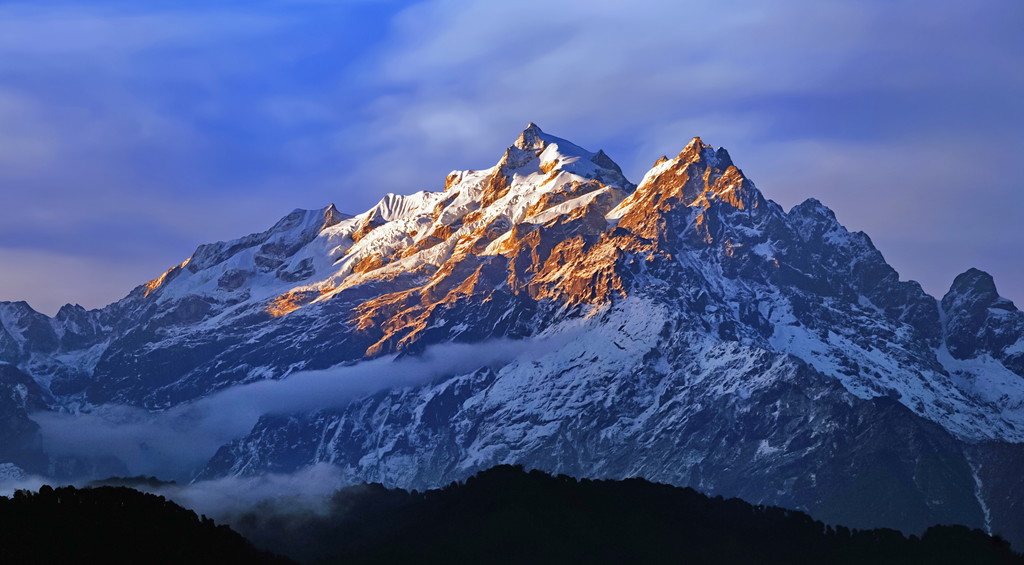Conquering the Sacred Heights of Kangchenjunga: Exploring the History, Geography, and Routes of the Third Highest Mountain in the World
Kangchenjunga, also spelled Kangchendzonga, is the third highest mountain in the world, with an elevation of 8,586 meters (28,169 feet). Located on the border of Nepal and India, Kangchenjunga is a sacred mountain for the local inhabitants and is considered to be one of the most challenging mountains to climb due to its technical difficulty and unpredictable weather conditions. In this blog post, we will explore the history, geography, and climbing routes of Kangchenjunga.
Geography:
Kangchenjunga is located in the Eastern Himalayas and is part of the Kangchenjunga Himal range, which spans across Nepal, India, and Bhutan. The mountain has five main peaks, with the highest peak being Kangchenjunga Main at 8,586 meters (28,169 feet). The other four peaks are Kangchenjunga West (8,505 meters), Kangchenjunga Central (8,482 meters), Kangchenjunga South (8,494 meters), and Kangbachen (7,903 meters).
The mountain is surrounded by several glaciers, including the Zemu Glacier to the northeast, the Talung Glacier to the northwest, and the Yalung Glacier to the south. The mountain is also located within the Kangchenjunga Conservation Area, which is home to a diverse range of flora and fauna, including the snow leopard, Himalayan black bear, and red panda.
History:
The first recorded attempt to climb Kangchenjunga was in 1905 by a British expedition led by Douglas Freshfield. The expedition was unsuccessful in reaching the summit, but they managed to map the area and gather valuable information about the mountain.
In 1955, a British expedition led by Charles Evans attempted to climb the mountain via the Southeast Ridge, which is now the standard route. The expedition was successful in reaching the summit, with Joe Brown and George Band becoming the first people to reach the summit of Kangchenjunga on May 25th, 1955.
Climbing Routes:
There are four main routes to climb Kangchenjunga: the Northeast Ridge, the Southwest Face, the Northwest Face, and the Southeast Ridge. The Southeast Ridge is the most popular route, and it was the route taken by the first successful expedition in 1955.
The Southeast Ridge route starts in Nepal and follows the Yalung Glacier to the base of the mountain. From there, climbers ascend the steep slopes to Camp 1 (5,900 meters), Camp 2 (6,500 meters), Camp 3 (7,400 meters), and Camp 4 (7,900 meters) before reaching the summit.
The route is technically difficult, with steep snow and ice slopes, as well as a section known as the "Black Pyramid" which is a steep rock face that is prone to avalanches. The route is also subject to unpredictable weather conditions, with high winds and heavy snowfall common on the mountain.
In addition to being a popular destination for mountaineers, Kangchenjunga is also an important cultural and spiritual landmark for the local communities in the region. The mountain is considered sacred by the Sikkimese people, who believe that it is the abode of their guardian deity, Dzo-nga. The mountain is also regarded as a symbol of unity and cooperation between Nepal and India, as it lies on their shared border.
To protect the natural and cultural significance of Kangchenjunga, the governments of Nepal and India have established the Kangchenjunga Conservation Area and Biosphere Reserve. This protected area covers an area of 2,035 square kilometers and is home to a wide range of flora and fauna, including over 250 species of birds and several endangered species such as the snow leopard and the Himalayan tahr.
In addition to mountaineering, the Kangchenjunga region also offers a range of trekking and hiking opportunities. The area is known for its scenic beauty, with pristine forests, alpine meadows, and mountain vistas. Trekking routes in the region include the Kanchenjunga Base Camp Trek, which offers stunning views of the mountain and its surrounding peaks, and the Singalila Ridge Trek, which offers panoramic views of the Himalayas and the plains of India.
In conclusion, Kangchenjunga is a mountain of great significance, both for its natural beauty and cultural significance. Its towering peaks and rugged terrain make it a challenging climb, but its remote location and protected status also make it a unique and precious destination for adventure and exploration. Whether climbing its slopes or trekking through its valleys, Kangchenjunga offers a one-of-a-kind experience for anyone seeking to discover the wonders of the Himalayas.
Conclusion:
Kangchenjunga is a majestic mountain that offers a unique and challenging climbing experience for mountaineers. Its remote location and technical difficulty make it a coveted prize for climbers, but its sacred status and fragile ecosystem require careful management and conservation efforts. As more climbers attempt to reach the summit, it is important to balance the desire for adventure with the need to protect the natural beauty and cultural significance of this magnificent mountain.
====================================================================
Keywords = Kangchenjunga, third highest mountain, sacred peak, history, geography, routes, legends, myths

Comments
Post a Comment